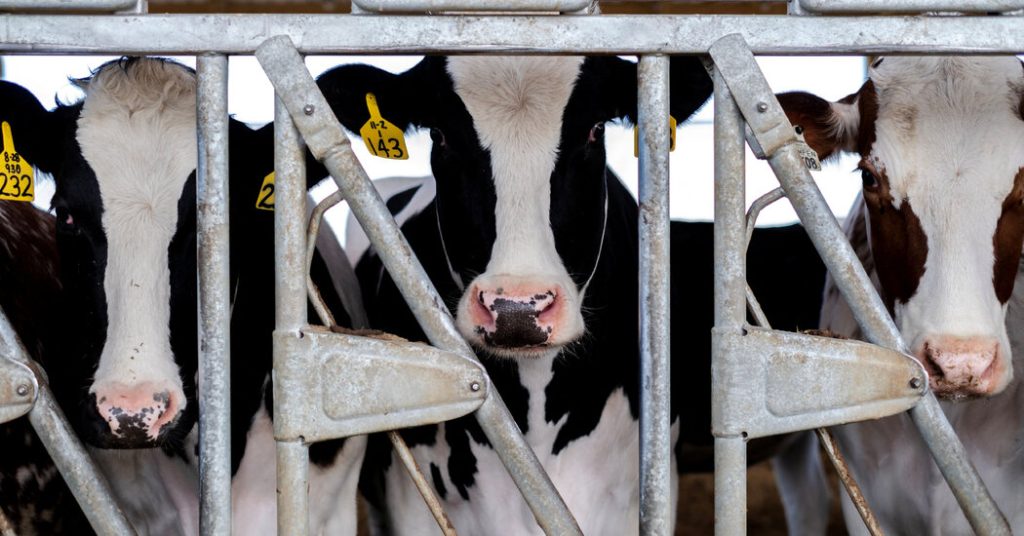The recent outbreak of bird flu on dairy farms has raised concerns about the potential impact on the nation’s food and milk supply. The Department of Agriculture has reported evidence of the virus spreading among cows, and from cows to poultry, suggesting that the infections may be more widespread than initially thought. However, the U.S.D.A. is not requiring farms to test cattle for infection, which has hindered efforts to determine the true extent of the outbreak. Federal officials have shared limited genetic information about the virus with scientists and other countries to track its evolution as it spreads.
Tests are being conducted to determine if pasteurized milk is safe from the virus, with the Food and Drug Administration still awaiting results. Experts are cautious about claims of milk safety prior to having data on the matter. The U.S.D.A.’s response to the outbreak is being criticized for echoing early mistakes made during the pandemic, with concerns about communication strategies. More transparency from the U.S.D.A. could allow outside scientists to assist in containing the virus. The agency’s dual role of regulating and promoting agriculture may also contribute to challenges in managing outbreaks.
The current strain of the bird flu virus has been circulating since 2020 in various animals, including poultry, wild birds, and now mammals. The outbreak among dairy cows has already spread to multiple states, with 32 herds affected. The source of the outbreak remains unclear, but there have been indications of transmission from birds to cows in some instances. The virus seems to primarily affect lactating cows temporarily without any deaths reported, though there have been cases of spill-back to poultry in certain circumstances.
Efforts to test for H5N1 infection in cows have been hindered by limited testing recommendations, leading to potential underestimation of the outbreak’s extent. Experts emphasize the importance of widespread testing of both symptomatic and asymptomatic animals to understand transmission mechanisms. Concerns have been raised about the lack of monitoring in pigs, which could serve as key hosts for the virus to evolve. The U.S.D.A. is not currently testing pigs, which could impact surveillance efforts.
Dairy farmers are facing economic challenges compounded by the bird flu outbreak, with fears that testing for the virus could further harm their businesses. Some farms are taking matters into their own hands by sending samples for testing at private labs. The response from federal agencies has been criticized for its lack of public awareness and slow dissemination of updates. Farmers are looking for more support and resources to protect their livestock and businesses during this crisis.
In conclusion, the bird flu outbreak among dairy cows presents a significant challenge to the agricultural industry and public health officials. Efforts to contain the virus and protect the food supply are ongoing, but concerns remain about the transparency and effectiveness of the federal response. Farmers and experts are calling for more widespread testing, support, and communication to address the outbreak effectively. The impact of the outbreak on the dairy industry and the potential long-term consequences of the virus remain uncertain.


